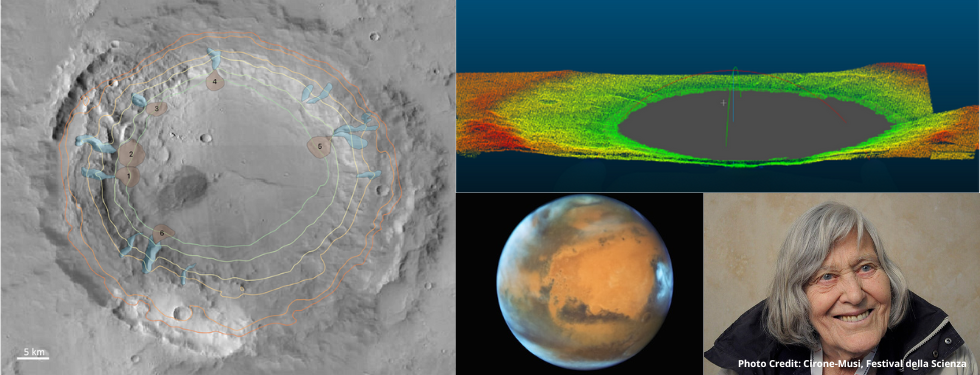A study led by the Department of Geosciences unveils the secrets of an ancient Martian crater

A team of researchers led by Barbara De Toffoli from the Department of Geosciences of the University of Padova, has uncovered the fascinating story behind a crater on Mars that they named Hack crater in honor of Margherita Hack, one of Italy's pioneering astrophysicists and a fierce advocate for scientific research, rationalism, women's rights, and the promotion of women in STEM fields.
The study, recently published in JGR Planets, reveals how this 70 km wide impact crater, formed around 3.5 billion years ago in the Arabia Terra region, once hosted a lake filled by groundwater seepage rather than surface runoff. Remarkably, this impact occurred during a geological period on Mars when abundant surface runoff was no longer present, making their findings about the lake system even more significant.
The crater exhibits exceptionally well-preserved water-related features, including valleys carved into its walls and delta deposits on the floor. By combining high-resolution imagery, topographic data, and geophysical modeling, the researchers pieced together the evolution of the lake.
Intriguingly, the inferred water levels inside the lake align with the hypothesized global shoreline levels on Mars, offering insights into the planet's ancient hydrological and climatic conditions during this transitional period.
The study, unveils a rare glimpse into the formation and evolution of a Martian lake system driven by groundwater sapping processes, highlighting an alternative scenario to surface runoff-dominated models proposed for other regions. Despite the increasingly cold and arid environment, the impact-shattered crust allowed groundwater to resurface and shape the landscape of Hack crater through sapping and sedimentary processes before eventually drying out.
Authors: B. De Toffoli, A.-C. Plesa, E. Luzzi, E. Hauber
Link: https://agupubs.onlinelibrary.wiley.com/doi/10.1029/2024JE008773





